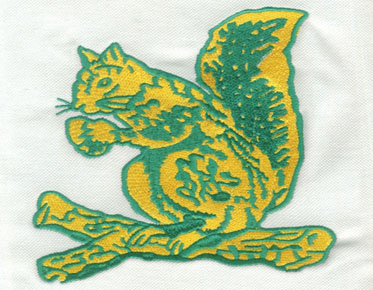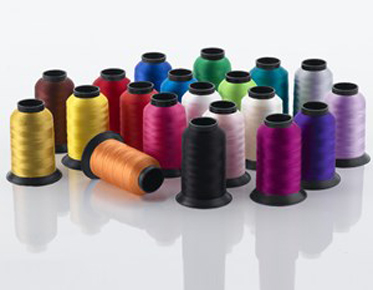Why You Do Have to Use Stabilizer When Embroidering
There are different types of fabrics,
and each type responds differently to sewing and digitizing embroidery. Different fabrics have different textures.
To make it easier to sew embroidery on different types of fabrics, there are
products that can be used as stabilizers. These products help the fabric become
more receptive to embroidery so that it is simpler to stitch on a variety of
fabric textures.
Do I have to use stabilizer when
embroidering?
As an embroiderer, you can use
stabilizers to make your embroidery process easier. Stabilizers allow
embroiderers to correctly sew embroidery on different types of fabrics.
Stabilizers are also called embroidery backings.
Procedure for Using Stabilizer When
Embroidering
Step 1. Determine the type of fabric
you will be embroidering. This helps determine the type of backing you need for
your embroidery process.
Step 2. Secure the fabric to the hoop
before you start sewing. This ensures your fabric is tight enough to work. It
can also help you understand how light or heavy the fabric is and the type of
embroidery needle you need for your embroidery.
Step 3. Soak the stabilizer on the
fabric on the hoop. The portion of fabric on the hoop has been identified as
the portion of fabric to be embroidered. Attach the stabilizer to this part of
the fabric.
Step 4. With the stabilizer in place,
you can now place your embroidery design on the stabilizer to confirm that it
is large enough for the embroidery.
Step 5. Now, sew the embroidery onto
the stabilizer and fabric. You can use an embroidery machine or embroider by
hand. When embroidering by hand, make sure you choose the appropriate
embroidery needle for the fabric you are sewing.
Step 6. Depending on the type of
stabilizer you are using, you may be able to remove it after your embroidery is
complete.
Tear-off stabilizers can be easily
torn from the fabric, water-soluble stabilizers must be immersed in water to be
removed from the fabric. You can also use leave-in stabilizers that will stay
in the fabric to hold the embroidery in place.
Step 7. Remove the fabric from the
hoop and verify that you have finished your embroidery as intended. When
embroidery mistakes happen, you can fix them very easily. Although it also
depends on the fabric of the clothes.
Types of Stabilizers Available for
Embroidery
Cutting stabilizer
A cut stabilizer, as the name
suggests, is an embroidery stabilizer that can be easily cut from the fabric
after the embroidery is set. Best for machine embroidery projects. However, it
is useful when you are hand embroidering stretchy fabrics.
The stabilizer section where the
embroidered design resides remains unchanged on the fabric. Therefore, cutting
stabilizers are also called permanent stabilizers.
The part that stays on the fabric
provides a permanent backing because unlike some other stabilizers it won't
tear after multiple washes.
To use this stabilizer, you need to
attach it to the wrong side of the garment. This allows you to cut excess
stabilizer from the embroidery
You can also use this backing when
embroidering hats.
Tear off stabilizer
As the name suggests, the tear-off
stabilizer can be removed after the embroidery is done. Unlike cut stabilizers,
tear stabilizers can be completely removed from the fabric after the embroidery
is finished.
Tear stabilizers work best with
non-elastic fabrics. You can use it for strong and non-stretch woven and
natural fiber fabrics.
Embroiderers use tearaway stabilizers
when they don't want the embroidery design to appear on the other side of the
fabric they are embroidering.
Cut stabilizers are best used for
decorative stitching and paper splicing in printing. It is capable of handling
a large number of stitches.
When tearing apart after embroidery,
make sure to hold the stitches firmly. This ensures that the stabilizer leaves
the stitches on the fabric when removed.
Wash off stabilizer
A wash-off soluble stabilizer is a
stabilizer that dissolves in water. The torn stabilizer is torn from the
fabric, the cut stabilizer is cut off, and the water-soluble stabilizer is
dissolved in warm water to remove it from the used fabric. It can also be used
to create lace in projects.
When you are done with your embroidery
project, you can now remove the stabilizer. Put it under warm running water.
This will dissolve and wash off your stabilizer.
Before you stop running water on your
embroidery, make sure there is no stabilizer on the fabric.
You can use this stabilizer when
embroidering sheer fabrics.
Fusible stabilizer
A fusible stabilizer is a special kind
of stabilizer. It is also known as interface and is suitable for standard
embroidery. It is also used when sewing.
To use this stabilizer, you need to
iron it on to the back of the fabric you are going to embroider or sew on. This
helps ensure your fabric doesn't stretch while it's in the hoop, and helps you
see clearly the area of fabric you're embroidering.
No display stabilizer
The stabilizer that doesn't appear is
another dedicated stabilizer. It's thin, light and strong. Best used for added
stability when embroidering on knitted fabrics. For best results, use this
stabilizer in combination with a tear stabilizer.
Stabilizers not shown are invisible
when used in light colored fabrics, hence the name. You can remove this
stabilizer with heat or water after you've finished your embroidery.
Water topping
Aqua toppings are another special
embroidery stabilizer. The aqua topping stabilizer is placed on top of the
fabric to be embroidered.
It works with textured and delicate
fabrics. By laying it on top of the fabric, it helps keep the stitches from
sinking into the fabric.
For best results, you will want a
backing when using the aqua topping. As you go through the embroidery, you can
remove the aqua topping by tearing it apart or spraying water on it until it
dissolves or there are no traces of the stabilizer.
Water active stabilizer
This is another specialty stabilizer.
As the name suggests, this stabilizer has an adhesive coating that is activated
by water. It's a heavyweight stabilizer that ensures you can make heavy
stitches for embroidery.
To remove this stabilizer after
embroidery, you can either peel it off, or lift the edge of the fabric and
spray some water on it to loosen it from the fabric. Repeat this process until
the entire stabilizer has been removed from the fabric.
When Should Stabilizers Be Used?
Stabilizers are most commonly used
when embroidering on elastic fabrics. As the name suggests, when you use a
stabilizer, your fabric is held firmly in place. This ensures that your
embroidery stitches stay on the fabric as intended.
You can also use stabilizer when
embroidering or sewing light-colored fabrics. The stabilizer ensures that the
back of sewing or embroidery cannot be seen through the fabric.
When working on lightweight fabrics,
you may also need a stabilizer to make sure the stitches stay in place and the
fabric doesn't tear.
Which type of stabilizer should you
use on which fabrics
With different types of stabilizers,
which one is best for the different fabrics being processed?
You can use tear-off stabilizers when
working with fabrics and garments such as t-shirts, canvas, leather and
corduroy.
Wash-off stabilizers work best on
fabrics such as cotton sheets, woven shirts, and denim. Whereas water soluble
stabilizers are used in silk, lycra and terry fabrics.



